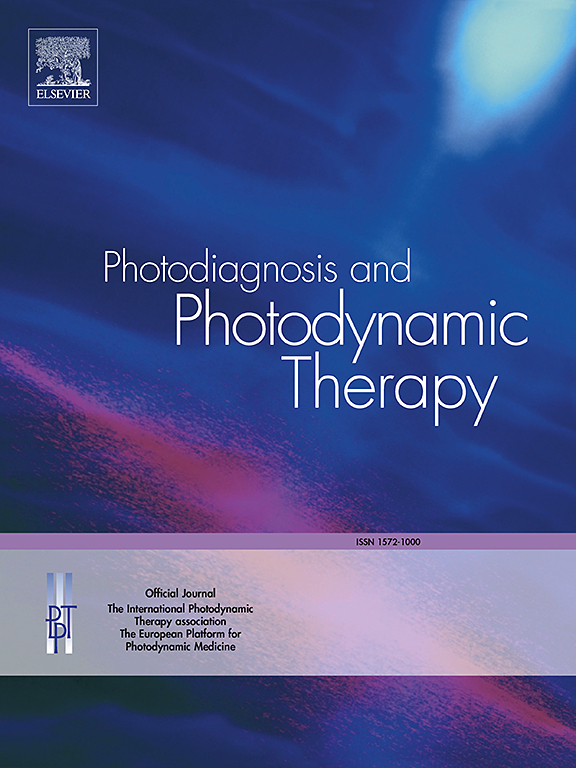哪个对睑板腺功能障碍更有效:脂流还是强脉冲光?系统回顾与网络元分析。
IF 3.1
3区 医学
Q2 ONCOLOGY
引用次数: 0
摘要
背景:睑板腺功能障碍(MGD)是蒸发性干眼病的常见病因。强脉冲光(IPL)和LipiFlow热脉冲是目前用于治疗MGD的两种基于设备的治疗方式。本系统综述和荟萃分析旨在评估和比较这些干预措施的疗效。需要强调的是,本综述中纳入的12项研究均未将LipiFlow与IPL进行直接比较,因此有必要进行间接比较。方法:我们系统地检索PubMed、谷歌Scholar和ScienceDirect,检索截至2025年2月发表的评估IPL或LipiFlow治疗MGD的随机对照试验(rct)。采用Cochrane偏倚风险(RoB 2)工具评价研究质量。对主要结局进行随机效应荟萃分析,包括TBUT(泪液破裂时间)、SPEED(标准患者眼干评估)评分和OSDI(眼表疾病指数)。采用贝叶斯网络元分析(NMA)对IPL和LipiFlow进行间接比较。结果:纳入12项随机对照试验,共969例(1938眼)。6项研究评估了LipiFlow和6项评估了IPL,但没有一项研究提供了正面比较。LipiFlow显著改善TBUT (MD: +0.67s;95% CI: [0.08, 1.26], p=0.03), OSDI评分降低(MD: -6.07;95% CI: [-10.85, -1.29], p=0.01),但SPEED评分变化无统计学意义(p=0.15)。IPL对TBUT有显著的提高效果(MD: +2.08s;95% CI: [0.39, 3.71], p=0.02)和降低SPEED评分(MD: -2.9;95% CI: [-5.18, -0.64], p=0.01),而OSDI结果无统计学意义。研究中的对照组差异很大,从未经治疗的对照组到热敷、眼睑卫生或机械表达,这进一步使交叉研究比较复杂化。然而,这些结论仅仅是基于间接比较,考虑到缺乏直接对比研究和对照干预的异质性,应谨慎解释。结论:虽然IPL和LipiFlow在治疗MGD方面都比对照组有改善,但目前还没有直接的比较证据。因此,任何比较结论都必须谨慎解释。各研究中对照组干预措施的可变性(例如,未经治疗vs.热敷或眼睑卫生)引入了显著的异质性,降低了间接比较的确定性。迫切需要直接的头对头随机对照试验来确定这些干预措施的相对疗效。系统评价注册:PROSPERO注册号:CRD42024543448。本文章由计算机程序翻译,如有差异,请以英文原文为准。
Which treatment works better for Meibomian Gland Dysfunction: LipiFlow or intense pulsed light? A systematic review and network meta-analysis
Background
Meibomian Gland Dysfunction (MGD) is a common cause of evaporative dry eye disease. Intense Pulsed Light (IPL) and LipiFlow thermal pulsation are two device-based treatment modalities currently used for managing MGD. This systematic review and meta-analysis aimed to assess and compare the efficacy of these interventions. It is important to underscore that none of the 12 studies included in this review directly compare LipiFlow with IPL, making indirect comparisons necessary.
Methods
We systematically searched PubMed, Google Scholar, and ScienceDirect for randomized controlled trials (RCTs) assessing either IPL or LipiFlow for MGD, published up to February 2025. Study quality was appraised using the Cochrane Risk of Bias (RoB 2) tool. A random-effects meta-analysis was conducted for primary outcomes including TBUT (tear breakup time), SPEED (Standard Patient Evaluation of Eye Dryness) score, and OSDI (Ocular Surface Disease Index). A Bayesian network meta-analysis (NMA) was performed to enable indirect comparison between IPL and LipiFlow.
Results
Twelve RCTs involving 969 patients (1938 eyes) were included. Six studies assessed LipiFlow and six assessed IPL, but none provided a head-to-head comparison. LipiFlow significantly improved TBUT (MD: +0.67s; 95% CI: [0.08, 1.26], p=0.03) and reduced OSDI scores (MD: –6.07; 95% CI: [–10.85, –1.29], p=0.01), though changes in SPEED score were not statistically significant (p=0.15). IPL demonstrated superior efficacy in increasing TBUT (MD: +2.08s; 95% CI: [0.39, 3.71], p=0.02) and reducing SPEED scores (MD: –2.9; 95% CI: [–5.18, –0.64], p=0.01), while OSDI results were not significant. Control groups across studies varied greatly, ranging from untreated controls to warm compresses, eyelid hygiene, or mechanical expression, further complicating cross-study comparisons. However, these conclusions are based solely on indirect comparisons, which should be interpreted cautiously given the absence of head-to-head studies and the heterogeneity of control interventions.
Conclusions
While both IPL and LipiFlow showed improvements over controls in treating MGD, there is currently no direct comparative evidence between these modalities. As a result, any comparative conclusions must be interpreted with caution. The variability in control group interventions across studies (e.g., untreated vs. warm compresses or eyelid hygiene) introduces significant heterogeneity, reducing the certainty of indirect comparisons. Direct head-to-head RCTs are urgently needed to establish the relative efficacy of these interventions.
Systematic Review Registration
PROSPERO registration number: CRD42024543448
求助全文
通过发布文献求助,成功后即可免费获取论文全文。
去求助
来源期刊

Photodiagnosis and Photodynamic Therapy
ONCOLOGY-
CiteScore
5.80
自引率
24.20%
发文量
509
审稿时长
50 days
期刊介绍:
Photodiagnosis and Photodynamic Therapy is an international journal for the dissemination of scientific knowledge and clinical developments of Photodiagnosis and Photodynamic Therapy in all medical specialties. The journal publishes original articles, review articles, case presentations, "how-to-do-it" articles, Letters to the Editor, short communications and relevant images with short descriptions. All submitted material is subject to a strict peer-review process.
 求助内容:
求助内容: 应助结果提醒方式:
应助结果提醒方式:


